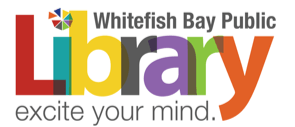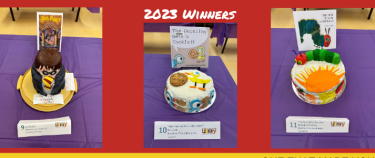

Blog
 Librarians Favorite Books of the Year
Librarians Favorite Books of the Year
on December 27, 2016
Tags: Adult (89), kids (58), fiction (51), middle grade (8)
Scott Lenski, Community & Adult Services Librarian
The Nix by Nathan Hill
Request It
Samuel Andresen-Anderson was labeled as a writer to watch by a very prominent publication after he published his first short story. Since then Samuel’s writing career has stalled, and he’s teaching English to college kids who aren’t really interested in reading Shakespeare (or much of anything). He gets dragged into the headlines when his estranged mother Faye, who hasn’t seen since he was boy, is arrested for assaulting a politician. Mother and son are brought together and must face their pasts whether they want to or not. This novel is wonderfully written, and filled with insight and humor. Hill’s writing reminds me of John Irving, and I loved how he threaded these storylines together.
Dark Matter by Blake Crouch
Request It
Want a book that will blow your mind? Are you a fan of sci-fi thrillers? Then bump Dark Matter to the top of your list. We meet Jason Dessen on the worst night of his life as he is kidnapped by gunpoint, brought to an abandoned building and knocked unconsciousness. When he wakes up he is in an unfamiliar place surrounded by strangers, but the strangers know who he is. They interregotate him and ask questions that don’t make a lot of sense. Jason escapes into a Chicago similar but different from the one he remembers. I don’t want to say too much more about this book but this page turner had me engrossed all the way to the climatic ending that I never saw coming.
Sapiens: A Brief History of Humankind by Yuval Noah Harari
Request It
This book actually came out in 2015 but it’s too good not to include on this list. Sapiens examines what it means to be Homo sapiens by exploring our culture, customs, food, science, belief systems, laws and more. Harai includes a little bit of everything in this book but does it with such finesse. He paints a picture of our history using tools like economics, paleontology, biology, and anthropology. He answers questions like: Why do we live in cities? How have our money systems developed? Why do we obey laws governing man? A sequel book, Homo Deus: A Brief History of Tomorrow, is due out in February so do yourself a favor and read Sapiens before then. I promise you’ll be clamoring for more.
Krista Hutley, Administrative & Adult Services Librarian
The Trespasser by Tana French
Request It
A new Dublin Murder Squad mystery novel is always reason to celebrate, and this sixth volume is as psychologically and thematically rich as the others. Meet Antoinette Conway, the only female detective on the Murder Squad. Aside from her amiable partner, Stephen Moran, Conway doesn’t have any allies on the force. Instead, the other detectives make sexist remarks, play cruel pranks, sabotage her work, and even spit in her coffee if she leaves it unattended. This toxic work environment causes Conway and Moran to work their new case, the murder of a young woman that looks like a clear-cut domestic, with increasing suspicion of their fellow detectives, who are pushing for the case to be closed too fast for comfort. This is a suspenseful, gripping, and bittersweet crime story with a fascinating and sarcastically funny lead character.
The Fifth Season (Broken Earth Book One) by N.K. Jemisin
Request It
This stunning fantasy-dystopia hybrid recently won the Hugo Award for its intricate storytelling, graceful language, and thought-provoking themes. The Stillness is an unstable land, beset with fault lines and volcanoes and with a long, bitter history of cataclysms, called Fifth Seasons. People are focused on disaster preparation and survival, with people living in small, spread-out, communities. A small portion of people, called orogenes, can manipulate Earth forces; they can quiet an impending earthquake or volcanic eruption or cause them. Authorities called the Fulcrum control the orogenes, training them to control their power and deploying them across the Stillness to quiet quakes, but these orogenes are essentially slaves. Jemisin tells the unflinching and heart-breaking story of this dangerous land and the enslaved orogenes from three intertwined perspectives.
Atlas Obscura: An Explorer’s Guide to the World’s Hidden Wonders by Joshua Foer, Dylan Thuras, and Ellen Morton
Request It
Fantasy and science fiction get a lot of credit for building new, exciting worlds, but what about our own world? It’s even more weird, fascinating, disturbing, and imaginative than you thought. The authors collect over 600 entries, organized by region and country, of the strangest places in the world, complete with snappy descriptions, historical context, photographs, maps, and charts. For example, did you know that the Museum of Icelandic Witchcraft and Sorcery houses the only known pair of necropants, pants made from a dead friend’s skin said to bring wealth to the wearer in 17th century Iceland? Wisconsin’s own House on the Rock even made the cut. Perfect for information junkies, world travelers, and U.S. road trippers.
Katie Kiekhaefer, Head of Youth Services
School's First Day of School by Adam Rex. Illustrated by Christian Robinson.
Request It
Many books have been written about the first day of school, but this picture book offers a new perspective. The main character is the school, who was built over the summer and carefully tended by a man named Janitor. When school learns that soon the children will be arriving for their first day, he feels unsure. Will the children like him? Will they treat him kindly? Growing pains occur for everyone: school’s water fountain squirts the puffy-haired kid in the face, a little girl has decided she doesn’t like school, and school is mortified when his fire alarm goes off. As the day goes on, everyone settles in and school finds out that he’s really lucky to get to be a school. This book is funny, heartwarming and a fresh take on a classic concept.
Narwhal: Unicorn of the Sea by Ben Clanton
Request It
Some of the best children’s books are about unlikely animal friends. In this charming graphic novel for beginning readers, Narwhal and Jelly (a Jellyfish, naturally) join the ranks of Frog and Toad and Elephant and Piggie. In this first book, Narwhal swims his way into new waters and happens to meet Jelly, who has never seen anything like Narwhal in his life. And Narwhal has never seen anything like Jelly in his life. The two prove to one another that they are not imaginary, bond over their mutual love of waffles, and go on adventures. The illustrations are adorable and the dialogue is chatty, charming and full of puns.
Highly Illogical Behavior by John Corey Whaley
Request It
Solomon is 16-years-old and suffers from agoraphobia, severe anxiety, and he hasn’t left his house in three years. Lisa is a junior who wants nothing more than to get out of her hometown and be admitted into a prestigious psychology program. Lisa decides to befriend Solomon but her motives are less than pure: she plans to make Solomon her test subject, fix him and then write her admissions essay about him. Her boyfriend Clark gets pulled along for the ride, but somewhere along the way, the three become friends, and everything becomes as complicated as you might expect. Whaley manages to make every character in this book a fully-formed character, even more minor characters. Solomon’s personality is more than just his anxiety and agoraphobia. Clark is a thoughtful and kind water polo star who also loves Star Trek and comic books. Even Lisa, who is very much the least sympathetic of all the characters, is more than just her ambition. Whaley also has an ear for dialogue: Lisa, Clark, and Solomon’s friendship is formed through thoughtful conversations and witty banter that feels like real conversations that friends might have.
Symphony for the City of the Dead by M.T. Anderson.
Request It
By and far, this is the best book I’ve read in a while. At its center, it is about the city of Leningrad, the composer Dmitri Shostakovich, the nearly 900-day long blockade of Leningrad during World War II, and Shoshtakovich’s Symphony No. 7, a piece which brought the city new hope and was used as propaganda to garner support from Russia’s allies. Beyond that, it’s a fascinating look at the importance of the arts, the resiliency of the Russian people, the lengths humans will go to in order to survive, the unfathomable corruption of the Russian government, and the role the arts play in government propaganda. Anderson wrote this book for a young adult audience, and he inserts himself in the book to pull apart the primary source material and pose tough questions to the reader: who really was Dmitri Shostakovich? Was he a government pawn? A savior of the revolution? Of course, it’s never that black and white. Anderson makes it clear that Shostakovich is living and creating art in “a regime where words are watched, lies are rewarded, and silence is survival”. Readers understand the life and death consequences of ordinary actions.
Back to blogs



